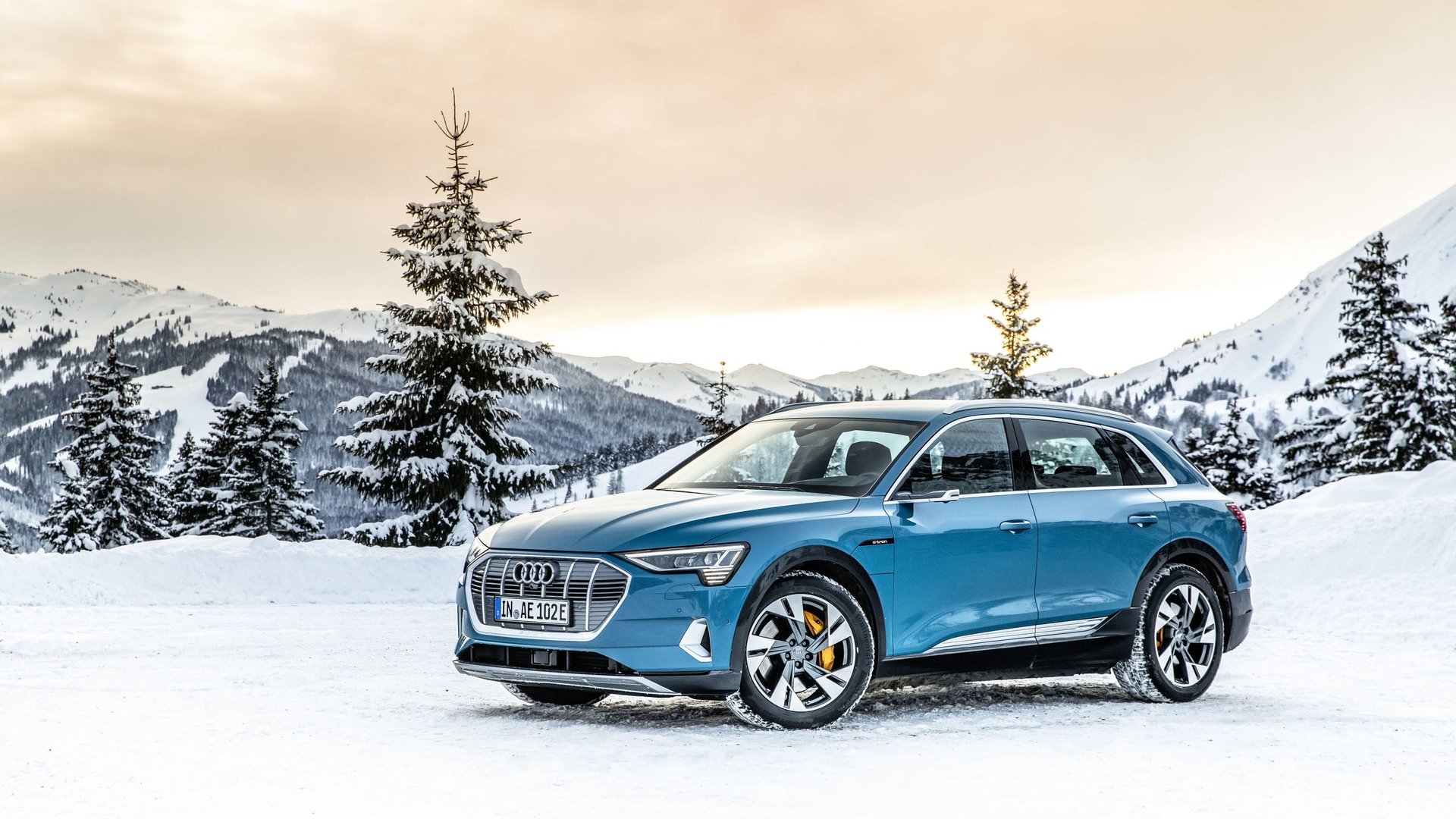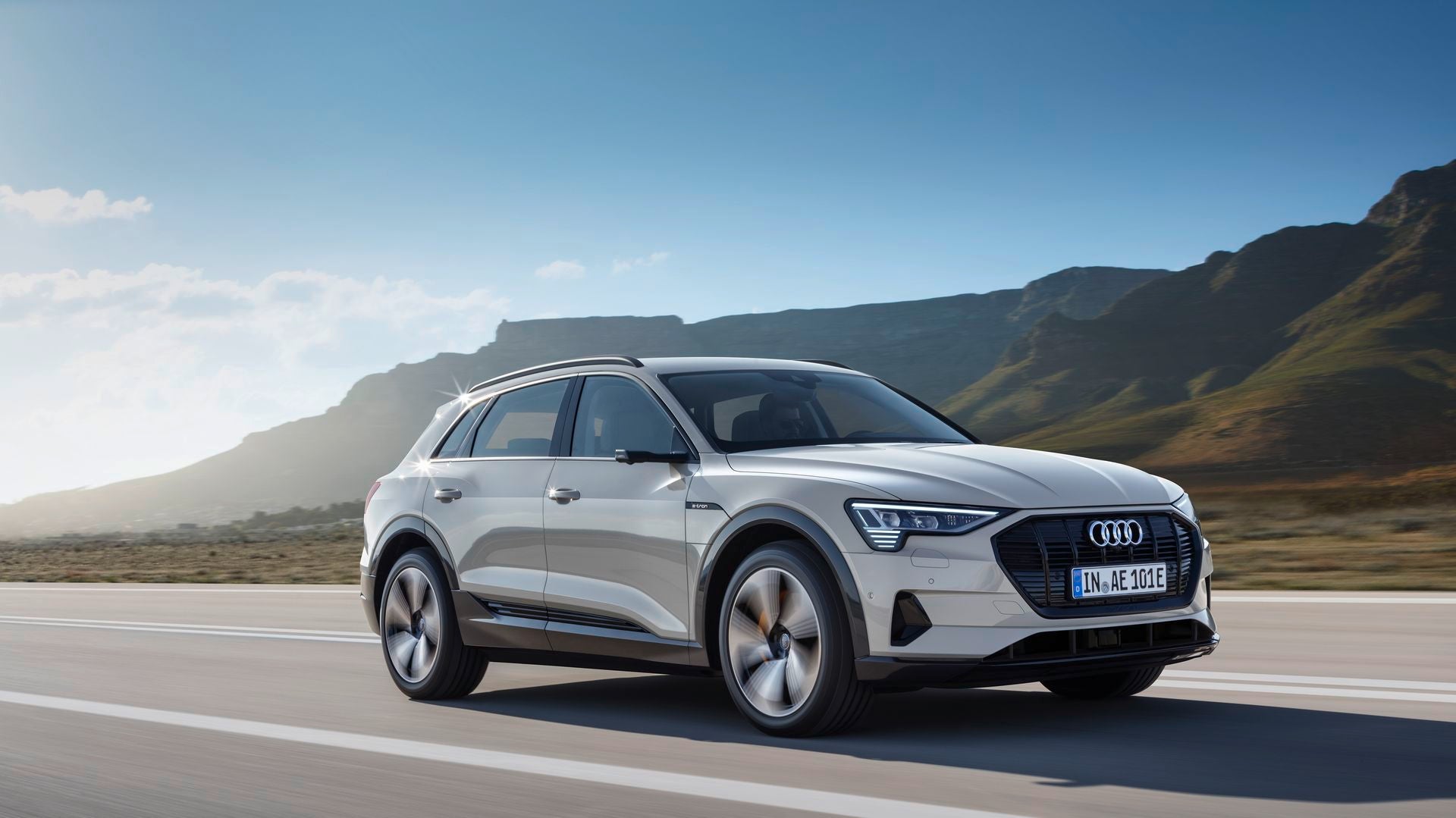Audi won’t say why the e-tron has a big battery but low range
Three years after it was first announced, Audi is ready to sell its first all-electric car. The e-tron has received decent reviews. It brings all the things that Audi is known for, says Autocar: powerful driving, superb interiors, and even new standards of ergonomics.


Three years after it was first announced, Audi is ready to sell its first all-electric car. The e-tron has received decent reviews. It brings all the things that Audi is known for, says Autocar: powerful driving, superb interiors, and even new standards of ergonomics.
Audi has received more than 20,000 reservations for the e-tron, with deliveries started in Germany, Norway, and the UK. The e-tron will be available in the US in May.
There’s one problem though. The e-tron SUV has a 95 kWh battery, but only 204 miles (328 km) of range, according to the US Environmental Protection Agency’s rating announced on April 5. Tesla’s SUV, the Model X, has a 238-mile range with a 75 kWh battery, and has a range of 289 miles with a 100 kWh battery.
“Something doesn’t add up,” says Venkat Viswanathan, a professor of mechanical engineering at Carnegie Mellon University.
Battery police
Audi isn’t the first victim of Viswanathan’s calculations. In 2017, when Tesla announced its planned heavy-duty, long-range truck (called the Semi), he did the math and found out it’d be impossible to make an electric truck that can go 600 miles on a single charge, which is the average driving distance for such vehicles. And indeed, when Tesla announced the range for the Semi, both models had a range of less than 500 miles.
Then next to fall prey was the Jaguar I-Pace in 2018. The I-Pace’s range of 234 miles on its 90 kWh battery was almost the same as that of a Tesla Model X with a 75 kWh battery. Viswanathan’s calculation showed that, accounting for all the differences between the models, Jaguar’s range should have been more than Model X’s. Jaguar answered a long list of questions Quartz posed, but it couldn’t explain why the I-Pace was using its battery so inefficiently.
Viswanathan does his calculations using simple physics and engineering. As Quartz explained previously:
It sounds like a high-school physics problem: To move a vehicle of X weight from point A to point B requires Y amount of energy. How much energy should be stored in the battery of the electric vehicle given its weight and need to travel that distance?
Not all of the energy in the battery gets used for moving the car. Some is lost to friction from the air that the vehicle moves through and the road it moves on. Some is lost as heat when running the electric motor and the powertrain which turns the wheels of the vehicle. And some is gained back through regenerative braking, which can be used to charge up the batteries when the car slows down. Adding all those up should, in theory, give you the amount of energy needed to be stored in the battery.

Audi’s problems
Viswanathan’s calculations show that, accounting for all the differences in the e-tron’s body shape, weight, and other factors, the car’s range of 204 miles needs only a 75 kWh battery. But the e-tron has a 95 kWh battery.
Viswanathan speculates that the Audi e-tron might perform so much worse on range than the Model X because Tesla has a better thermal-management system for the battery. An electric car’s battery heats up when it’s charged or discharged. The faster the charging or discharging, the more heat is produced. The e-tron supports fast charging up to 150 kW, where as the Model X can support up to 120 kW. If the heat causes the battery’s temperature to rise, it can harm the battery and reduce its range.
Given it is Audi’s first electric car, the company might be playing it safe with its thermal-management system. It might be using up more energy to maintain a tighter temperature range for the batteries, and thus leaving less energy for driving. Tesla has had hundreds or even thousands of its cars driven for more than 100,000 miles (or about 160,000 km), the distance usually covered by an electric-car battery warranty. That means Tesla has had the time to optimize the thermal-management system to use as little energy as possible, while maintaining the battery’s performance.
“It seems all other carmakers are just playing catch up with Tesla,” says Viswanathan.
Audi says the e-tron uses only 88% of the battery’s listed capacity, but it doesn’t say why. All car batteries build in some amount of redundancy, because charging a battery all the way to 100% or draining it all the way to 0% can shorten its lifespan. But most car batteries use more than 95% of the stated capacity; the e-tron appears to be an exception.
Another explanation for the poor range could be that the e-tron’s engineers purposefully designed the car to use the battery conservatively. Viswanthan’s Carnegie Mellon colleague Shashank Sripad speculates that Audi wants to ensure that its stated range closely reflects its range in real-life driving conditions.
The EPA range is calculated on a standardized test routine to ensure that the results between different cars are comparable. Real-life range performance can vary from EPA results, but the difference between the EPA ranges of the e-tron and Model X is too large to ignore.
The other standard for comparison is the WLTP rating used in Europe, where the Audi e-tron gets a 259-mile range, the Jaguar I-Pace gets a 292-mile range, and Tesla Model X doesn’t have an official rating. So while we can’t compare the e-tron to the Model X under WLTP, the I-Pace beats the e-tron on range even though the I-Pace has a slightly smaller battery.
For now, all Viswanathan and Sripad can do is speculate about the reasons for the e-tron’s inefficient battery. Audi declined to answer any of the technical questions Quartz posed to it, despite multiple requests.
A 204-mile range is good enough for most users, an Audi spokesperson said. “In the US, people only take trips over 50 miles less than 2% of the time,” he added.
That may well be true, but if a carmaker is going to charge customers for the cost of a big battery, the customer should be able to get its full benefit. The battery, after all, is an electric car’s most expensive component.